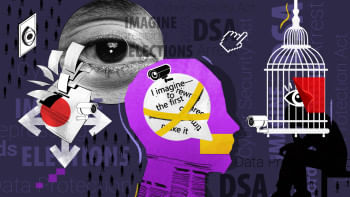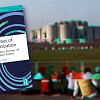‘I Like America and America Likes Me’

My PhD dissertation examined the shamanic in contemporary British poetry. My research resumed the master's thesis I had left off in the deserts of the American Southwest at the University of Arizona. In the Wild Wild West of Tucson, which used to be the capital of Mexico before the annexation and a popular venue for most old Western movies, I came across the tales of Coyote.
Coyote is a prairie dog with the reputation of being a trickster. He is always fooling around, making a fool of himself. He is a straddler of opposites. He seems to be a close cousin of the uncle fox or foolish crocodile in our Bangla folktales. The indigenous people of the American Southwest hold the trickster Coyote in great reverence. The Navajo people call him Old Man Coyote and consider him one of their tribesmen. Coyote does things that keep pushing moral boundaries and become a guiding reference for his people. In some stories, he even helps the great spirit create the universe. In others, he is nothing more than an ordinary buffoon.
Life offers us moments to connect with one another at a deeper level. The wedding of tigers in Japan, wolves in Finland, foxes in Bengal, and coyotes in America when the rain and the sunshine coincide tells us that human minds desire to explain unnatural acts in a natural manner. But deep down, they do not want conflicts. They want union even in the face of opposition.
In one such story, Coyote cheated on his wife and was having a rendezvous with a badger. When his wife started looking for him, a rain cloud started pouring on the secret meeting point and exposed the lovers. This phenomenon of sun showers—when it rains with the sun shining—is a stark reminder of the nursery rhyme that we have about the wedding of foxes in our Bangalee culture. This connection between a Bangla proverb and a Native American story made me search for further connections.
My master's research led me to the figure of the trickster, which is a recurring idea in different cultures. According to psychologist Carl Jung, the trickster is an archetype that remains prevalent in everyone's mind, irrespective of time or place. The idea of an animal wedding at the time of sun showers is thus found in tales from Brazil, Finland, Korea, Nepal, India, Sri Lanka, Malaysia, and others. The similarities suggest that human civilisations are connected at a deeper level. Even cultures that have never contacted one another may have similar ways of explaining their surroundings.
Our fascination with immoral or amoral animal figures predates the birth of organised religion or written literature. During my research, I learnt how the traditional medicine men of the Navajo people use coyote songs to heal their people. Only these shamans are privy to the hidden nature of these songs and their healing qualities. The watered-down version of a children's rhyme, "Raindrops fall, sunbeams glare/The fox's vows in the air," devoid of its original story, has probably lost its healing touch. Minus the sexuality of Coyote or its supposed immorality, we are left with a rhyme with no reason.
When I started doing my PhD years later at the University of London, I wanted to further examine the primitive trickster figure. But this time I focused on the figures who attempt to access the secret codes of stories. My research led me to contemporary artists who have taken up the role of shamans—like the Navajo medicine men—to use animal tales to redress social sickness. Under capitalism or colonialism, material greed, desires for power, exploitation of natural resources, violence and aggression manifest this sickness.
I was drawn to the work of German conceptual artist Joseph Beuys. In 1974, Beuys, for the first time in his life, travelled to New York and boarded an ambulance from the airport wearing a felt blanket to protect himself from the sickness of America. He went straight to an art gallery in Soho and spent eight days inside the cage with a coyote before returning to Germany in an ambulance. During World War II, Beuys was made a member of a combat bomber unit. In 1944, a plane carrying his unit was gunned down. A Tartan shaman saved Beuys. Following this near-death experience, Beuys fashioned his art as shamanic. Once the Vietnam War ended, he performed this coyote art, titled "I Like America and America Likes Me," to remind his American audience that they needed to return to and reconcile with their native spirit to find solace from the racial divisions and subjugations that it witnessed during its Civil Rights Movement. Beuys previously refused to visit the US when it was engaged in the Vietnam War. So his claim that "America Likes Me" is ironic, to say the least. But the America he likes is America in its essential form: free in spirit, passionate, always evolving, with a strong survival instinct that celebrates humanity.
On the day before our national election, where individual rights are fraught with fears, both national and international, I am thinking of my Western education that I received across the Atlantic divide. I like America for the intellectual curiosity it has instilled in me. The freedom of thought it has given me. And Beuys reminds me that healing must come from within.
I remember while in Tucson, I invited one of my professors to dinner. She came to my house with a jar of pickles made of olives that she grew in her backyard. I told myself that this is the America I never knew; I had always thought my aunts in Bangladesh would do something like that. The Hollywood version of America has never shown me this America. Yet, this is the America I like, and this is the America that likes me.
There are, of course, many things I do not like about America. But as a country that has practised democracy for almost 400 years (including assemblies in New England colonies), there are lessons to be learnt. But as Beuys has exposed, America has its wounds too. No nation is perfect, because we humans are not perfect. However, aspirations to present our better selves make us humans in the great chain of being poised between angels and animals.
Life offers us moments to connect with one another at a deeper level. The wedding of tigers in Japan, wolves in Finland, foxes in Bengal, and coyotes in America when the rain and the sunshine coincide tells us that human minds desire to explain unnatural acts in a natural manner. But deep down, they do not want conflicts. They want union even in the face of opposition.
On the eve of the national election, I like this myth of union and harmony because this myth of union is like me: a trickster who straddles opposites.
Dr Shamsad Mortuza is professor of English at Dhaka University.
Views expressed in this article are the author's own.
Follow The Daily Star Opinion on Facebook for the latest opinions, commentaries and analyses by experts and professionals. To contribute your article or letter to The Daily Star Opinion, see our guidelines for submission.

 For all latest news, follow The Daily Star's Google News channel.
For all latest news, follow The Daily Star's Google News channel. 










Comments